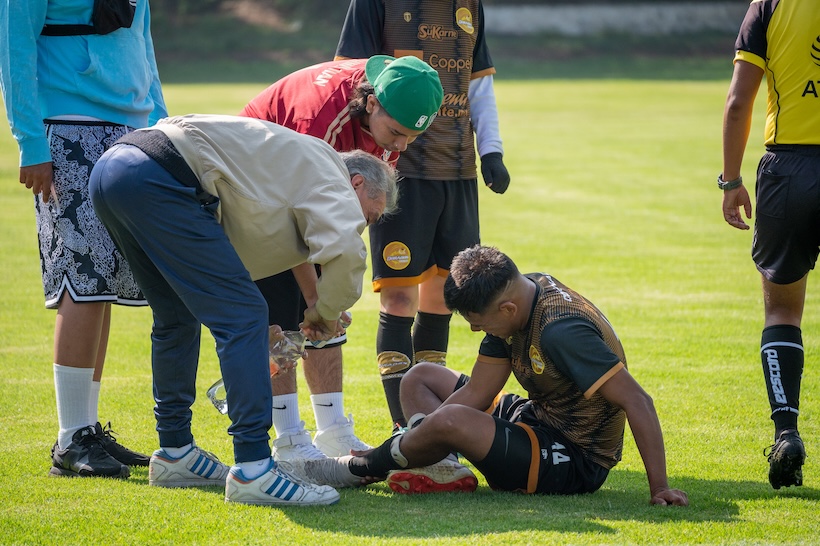
Don’t buy into the myth that you can always surmount injuries. The body can only take so much, especially if you’re an athlete. The risk of injury among athletes is much higher compared to that among regular people.
It’s not uncommon for an athlete’s body to undergo different kinds of pain. When you play on a professional level, pain can come in all angles—physical, psychological, mental, and emotional. There’s so much at stake when there’s pressure to win. And in the game of play, winning is the only reward that makes everything worthwhile.
Injuries on ligaments, muscles, and bones, are some of the most frequent types of sports pains. Athletes spend years on building their careers from the ground up. Some are considered to be the best but never got around to winning a championship because of injuries.
It only takes a split second to change an athlete to a completely different player. Recent medical breakthroughs have found better ways of managing injuries. Some are easily adaptable, wearable, and provide immediate relief, like muscle tapes and other kinds of bands.
But the injuries that hurt the most are those that are entirely unexpected. Here are a few promising athletes whose sports career never bounced back after an injury.
Monica Seles
Over 25 years ago, women’s tennis changed when Günter Parche stabbed tennis player Monica Seles in Germany. Seles was the top ranked female player in the ’90s. She was sixteen when she became the youngest female player ever to win the French Open.
But after the attack back in 1993, Seles was never the same again. Though she healed completely from the stabbing incident, she was unable to get back to her previous playing form and footing. Seles succumbed to depression and put on an extra 30 kilograms. After her break, she tried to make a comeback in 1995. A year later, she won the Australian Open.
Things started to look up for Seles after the win. She had won nine Grand Slam titles before the attack and looked poised to get back in the same form she had during her top-ranking days.
But she never really surpassed the psychological injuries she sustained from the incident. She retired in 2008 and released her autobiography with details on why she will never set foot in Germany again.
Ken Griffey Jr.
He was considered one of the greatest baseball players in American history. At the peak of his prime, fans and fellow ballplayers were in awe of his baseball swing. The 13-time all-star Mariners player had the world of baseball at his feet.
With the way he hit the ball, he was on the run to earn the title Home Run King. But his 22-year career had been derailed by a left knee injury. He underwent several surgeries, including one for a broken wrist.
Despite the mishap, he had a total of 2,781 hits and 630 home runs. There would’ve been no bounds to what he would have achieved in baseball if he hadn’t suffered from injuries in between seasons. Because of his talent and dedication, he earned 99.3 percent of the votes for the 2016 Hall of Fame.
Penny Hardaway
Mid-’90s basketball season was an exciting time. Michael Jordan’s days were nearly ending, and Kobe Bryant had only just hit the ground running. Penny Hardaway was the player caught smack in the middle of it all. He was on fire, averaging 16 points, 6.6 assists, and 5.4 rebounds in his first season. He helped put Orlando Magic back in the basketball map.
Hardaway looked like the future of basketball, with Shaquille O’Neal next to him. On his second season, Hardaway leveled up to 20 points and seven assists per game. He was the most threatening point guard in the NBA, for an uninterrupted four- to five-year stretch.
Sports analysts considered him to be the next Magic Johnson with his dynamic shooting and ball-handling skills. He was a natural at court and an upcoming superstar.
His speed and athleticism took a 360-degree turn when he sustained a severe left-knee injury. It left him broken. He played through the pain for the next few years, and it changed his entire basketball game. He went on to have four more surgeries on the same knee.
He moved to Phoenix and played alongside Jason Kidd after his stint in Orlando. But his left knee still plagued him, and he sustained ankle injuries along the way. The pain from his knee injuries came from the smooth lining of the joint. It’s the part responsible for the gliding movement of the knees.
At the time of his injury, medical professionals relied on heavily on surgery as a corrective measure. MRI technology was not available back then, so doctors couldn’t precisely pinpoint where the pain was coming from to make the right diagnosis.